FREQUENTLY ASKED QUESTIONS
Women’s Community Shelters (WCS) is an Australian charity set up on a social franchise model to provide emergency accommodation for homeless women in NSW, in partnership with local communities. WCS operates under an innovative groundbreaking funding model involving collaboration between business people, philanthropic foundations, local communities and the NSW and Commonwealth Governments.
Aren’t women’s refuges an ‘old’ model that was ideologically based and is now outdated?
Read More
Women’s Community Shelters model is not the same as the ‘old’ model of service delivery. Our shelter model is characterised by:
- Innovation and continuous improvement
- Industry best practice
- Community participation
- Effective use of technology
- Professionalism and expertise
- Sustainable outcomes and measurable progress
Our shelters provide crisis accommodation and active, client-centred case management where each resident receives the culturally appropriate care they require. Operationally, residents are supported by all-female staff, however our local Boards and subcommittees are welcoming and inclusive of men and women with expertise.
Our shelters offer communal living environments to leverage economies of scale in staffing, volunteer support, community fundraising capacity and available local properties. Local property represents vital, additional assets brought to the table by our model.
Our model also reaches outward through community engagement. We welcome the participation of the local community through fundraising and volunteering. Our volunteer program ensures a good match between volunteers’ skills, capacity and the needs of the shelter.
How do we know your policies, procedures and operations measure up to what the funded sector is providing?
Read More
The WCS CEO (a former Shelter Manager and senior Federal government executive) developed the WCS Policy & Procedure Manual in consultation with sector experts, including consultants who have worked for NSW FaCS. Our Manual incorporates the Going Home, Staying Home practice standards and the ‘It Stops Here’ and ‘Safer Pathways’ responses to domestic violence. We utilise the DV SAT tool in assessing risk for clients identified as leaving domestic violence and work with the sector’s intake and assessment tool through Link2Home and our funded sector partners. Our Policies and Procedures are continuously improved across our shelter network to ensure best practice, quality assurance and learning. As a pre-qualified organisation under the NSW Going Home, Staying Home tender process, we took steps to put ourselves on the front foot with our operational model and guiding documents.
Our Shelter Managers are professionals with qualifications in psychology and mental health as well as significant experience in the management of services supporting women who are homeless or leaving domestic violence. Our extensive connections across the sector allow for robust reference checks for all staff. WCS supports the governance and oversight of day-to-day shelter operations, including professional debriefing. We also recently announced a landmark partnership with Westpac which provides a first-class Employee Assistance Program for all staff and Board members.
Shouldn’t we be concentrating our efforts on homelessness and domestic violence on preventative measures?
Read More
We agree that preventative measures should be pursued. However, we also know that preventative measures and behavioural change take a long time to make a real difference. In the interim we need to do both: undertake preventative measures and provide crisis accommodation. We cannot leave women unsupported who need help right now while we wait for the social change to take root.
Our model of community engagement and capacity building translates the larger social issues of women’s homelessness, disadvantage and domestic violence down to impacts at the local level, and therefore provides tangible opportunities for community members to do something meaningful to support vulnerable women (and children). This approach translates to useful skills community members can apply other local projects, and develops networks on the ground which can be activated for those in need.
Some of the other ‘intangibles’ and ‘hard to measure’ things that WCS is doing in local communities involve encouraging conversations, raising awareness, and freeing women from shame and silence in admitting domestic violence happens everywhere. As communities take ownership of this problem, the actions they are taking are fulfilling the educational need for early intervention and prevention of domestic violence and women’s homelessness, with the local shelter as a focus.
We work with schools all over NSW and beyond to deliver a unique educational program that delivers ‘Respectful Relationship’ training and then empowers students to put that learning into action supporting their local women’s community shelters. For more information about our Walk The Talk program, click here.
Shouldn’t we focus on the perpetrators of domestic violence so women don’t need to be the ones to leave?
Read More
Focusing on perpetrators of violence through a justice and policing response is an excellent step but it is only one part of the response. We cannot do that at the expense of providing support for the women who ask for a safe place to stay.
Most women who are homeless or experiencing domestic violence don’t currently report to the police. Over 55% of women killed in domestic homicides have never come to the attention of police prior to the incident. The new ‘It Stops Here’ Safer Pathways trial is bringing to light staggering numbers of women exposed to domestic violence, with a key deficit noted by these areas as a lack of safe places for women to go (Trial site – Orange 2015).
Only around 20% of women through our shelters who have left domestic violence report to the police, but still identify that they are unsafe to remain in the home.
Why can’t women stay in their own homes, and make the perpetrator leave, so we don’t need as many shelters?
Read More
Without question, if it is sustainable, women should be supported to stay in their own homes. However there are often significant barriers to this:
- A perpetrator of domestic violence knows exactly where to find their partner and/or children, and unless a 24/7 police response can be guaranteed, they remain at risk.
- Family members of the removed perpetrator can pose a risk to a woman remaining at home
- Remaining in the home may be sustainable in the short-term, however it may be challenging for a woman to afford the rent or mortgage on the property on her own, particularly if she is the primary carer of young children or has few employable skills
- Providing government funding towards significant security upgrading may not be sustainable if the woman cannot afford to keep the property
- Many women who have experienced traumatic incidents at home cannot stay in the location due to the potential for the exacerbation of mental health conditions such as anxiety and post-traumatic stress disorder.
For the foreseeable future, there will be a growing need for safe, well run crisis accommodation for women.
Women should have a choice about options if they are homeless or leaving domestic violence.
Read More
The sector currently provides a range of options for women, including non-residential case management support, Staying Home, Leaving Violence, and other early intervention and prevention programs. However, there is simply not enough crisis accommodation to cope with the level of demand, which is increasing. The peak bodies, DV NSW and Homelessness NSW have identified that the number one issue with the Going Home Staying Home tender reforms is an insufficient focus on crisis accommodation services.
More than 50% of women requesting a crisis bed are turned away, mostly due to a lack of space, and this figure has not moved in decades. Women are making the choice to ask for a safe place to go, and do so in increasing numbers. In the most recent shelter we opened, we receive 9 requests for every bed that becomes available.
Don’t NSW figures show ‘turnaways’ from services are going down?
Read More
No, they aren’t. A change in the way these numbers are measured under the Going Home, Staying Home reforms is the cause of the change. The ‘No Wrong Door’ approach to measurement pushes the responsibility on to services to find another service for a client if they can’t provide one. If they make a referral of any sort, this translates in the system as a ‘service provided’ when there is insufficient quality assurance that there is actually an outcome for a client. A ‘service provided’ does not equate to obtaining a crisis bed when you need one.
Women’s homelessness and domestic violence require a separation of service delivery.
Read More
Our shelter model accommodates women who are homeless, and women who are leaving domestic violence. Our Sanctuary and Great Lakes women’s shelters also accommodate women with dependent children. Some sector advocates believe that service provision for homelessness issues, mental health and domestic violence must be ‘quarantined’ or separated.
Our model relies on the expertise and experience of an excellent, professional Shelter Manager based on-site at each shelter, supported by a 24/7 team of case workers. We undertake a risk assessment for all residents and the Shelter Manager has the ultimate decision on who can safely be accommodated. We believe that the use of the Shelter Manager’s professional expertise, knowledge of the premises, and understanding of staff capacity is the best way to make a judgement as to which clients can be supported in a communal living environment.
Our experience has shown that there is frequent co-existence of domestic violence, mental health and homelessness issues and that in providing services, it makes no sense to ‘stream’ women according to their identified primary presenting cause. Each resident is provided with a client-centric case management approach, which may include elements of response drawn from domestic violence, homelessness, mental health and culturally specific practices.
Your model won’t work in areas of disadvantage where shelters are really needed.
Read More
We acknowledge that there are areas in NSW which have insufficient social capital to fundraise half the set-up costs and 1/3 to ½ of the operational costs of a shelter. Our shelter model works where there is a local need identified, and a willing group of people to form the Board of each shelter.
Each shelter prioritises local women, however we also connect up with Link2Home and the Domestic violence line to take referrals. Our Hornsby shelter takes around 75% of referrals from Link2Home and our Manly shelter takes around 50%. These shelters relieve pressure on the state-wide system by providing extra crisis beds in a high-demand environment.
WCS offers connections to professional development, EAP support and training for our Boards and shelter staff. We would consider an expansion of our shelter network into areas where the NSW State Government would fully fund a service under WCS management.


